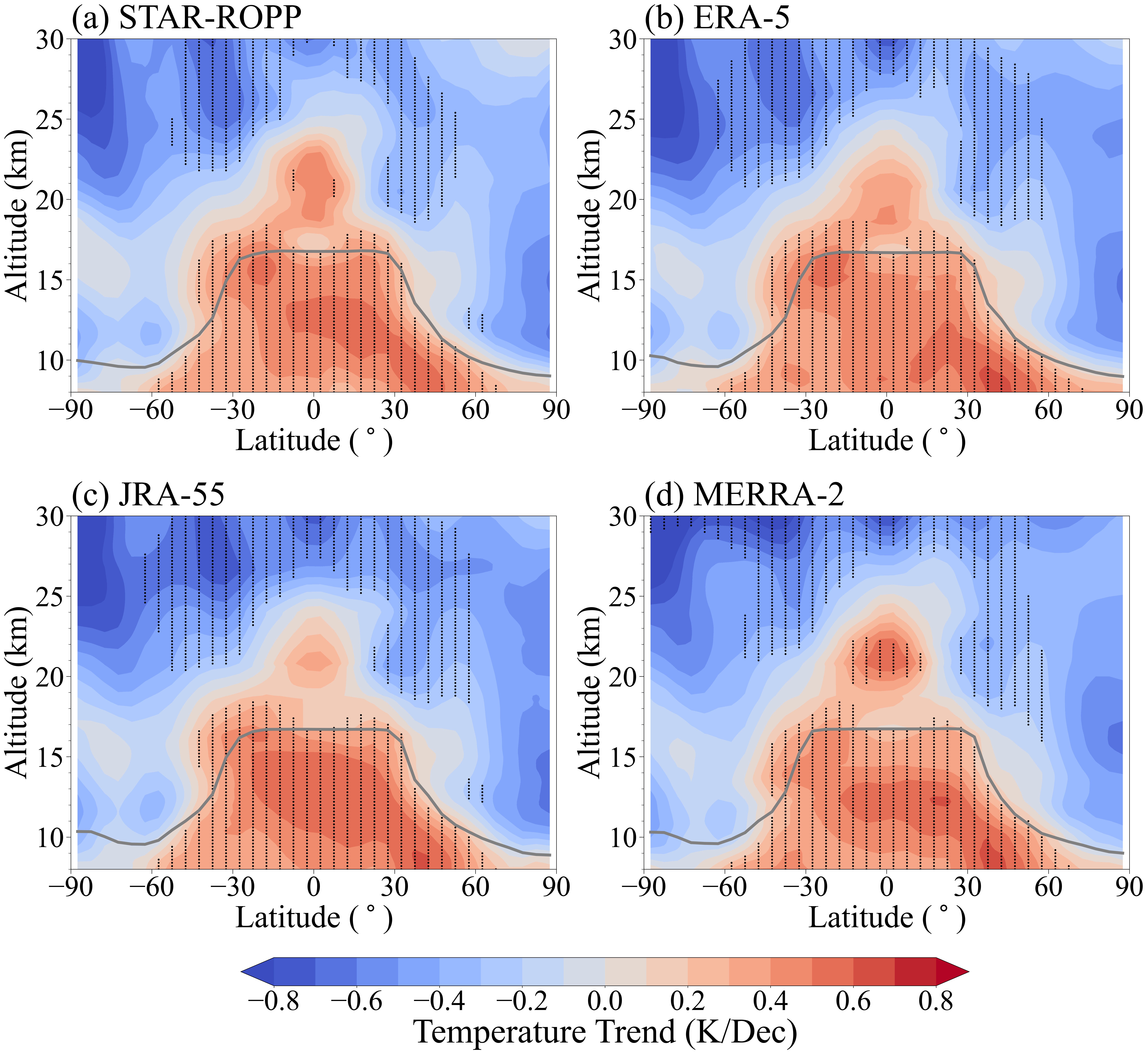
Construction of Temperature Climate Data Records in the Upper Troposphere and Lower Stratosphere Using Multiple RO Missions from September 2006 to July 2023 at NESDIS/STAR
We develop a new monthly zonal mean climatology (MMC) in the upper troposphere and lower stratosphere (UTLS) from September 2006 to July 2023 using the dry temperature profiles from multiple Global Navigation Satellite System (GNSS) Radio Occultation (RO) missions processed by the GNSS RO Science and Data Center (SDC) at the NOAA Center for Satellite Applications and Research (STAR). The multiple RO missions include Formosa Satellite Mission 3/Constellation Observing System for Meteorology, Ionosphere, and Climate (COSMIC-1), Formosa Satellite Mission 7/ COSMIC-2, SPIRE, and Meteorological Operational satellite (MetOp)-A, -B, -C. We compare collocated profiles from multiple STAR-processed RO missions to ensure the consistency of the data used in the construction of STAR MMC. We validate the robustness of the sampling error correction method through three different reanalysis models. The result shows the uncertainty caused by using various models in the correction method is negligible. This STAR MMC is then compared with the ROM SAF MMC and the MMC derived from ERA-5, MERRA-2, and JRA-55 reanalyses, exhibiting good agreement. Various climate signals, such as Quasi-Biennial Oscillation (QBO) and El Niño–Southern Oscillation (ENSO), can be identified from STAR MMC. The global temperature trends present a transition from a prominent warming of 0.310 ± 0.083 K/Decade in the upper troposphere to a robust cooling of -0.294 ± 0.044 K/Decade in the mid-stratosphere. Our results demonstrated that the warming in the UT is apparent in RO data. These results indicate that STAR MMC can capture climate signals and monitor long-term climate change.
- mmc_tdry_2006-09_2023-07.nc (Data Download)
- Reference (Link --TBD)
